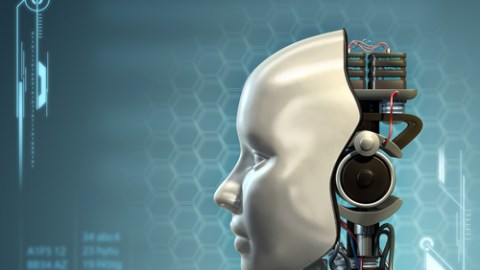How Close is the Turing Test to Being Beaten?

Alan Turing was an English computer scientist, linguist, philosopher and code breaker widely credited as being the “father of artificial intelligence (AI)” and inventing the computer. 100 years after the birth of Alan Turing, we take stock of his most interesting idea, The Turing Test.
Alan Turing proposed that if a machine could reliably fool a human conversational partner into thinking that it was human, that machine would have demonstrated real artificial intelligence. The original formulation of the test called for a human and a computer to both have a conversation with a judge through a text only medium. If the judge could not reliably distinguish between the machine and the human, the machine would have met Turing’s standards for machine intelligence.
Below we will see how far we have come since Turing’s time.
1) Siri is a program that comes with all iPhone 4s’s. In 2010, Apple purchased Siri, which began as a project funded by DARPA (Defense Advanced Reasearch Projects Agency), the Q Branch, so to speak, of the U.S. Government.
Siri is, according to Apple, an “intelligent personal assistant,” who can interpret natural language commands to perform functions with things like Opentable, Google Maps and Wolfram Alpha. Siri’s inclusion on the iPhone 4s was met with significant fanfare, but not all of Apple’s followers are completely enthusiastic. Apple co-founder Steve Wozniak, for example finds Siri has lost the easy ability to answer questions that attracted him to it prior to Apple’s purchase. Instead, he finds, it is more likely to feed irrelevant commercial information or advertising to its users now.
Siri was never intended to feel completely human, and her voice and speaking style reflects that (“I’ll call you Your Lordship from now on. Ok?”). Nonetheless, it is hard not to refer to the program as “she”, and praise has been strong and fairly consistent for a sense the personality and humor Siri exhibits (see the above picture in the Slideshow), doubtless a result of extraordinary time and effort.
2) NELL, or Never Ending Language Learning, is the function of Carnegie Mellon University’s research project Read the Web. NELL spends all day every day reading natural language from the internet and extrapolating facts from it, as well as improving it’s ability to extrapolate facts.
The opening text of NELL’s site is “Can computers learn to read? We think so.” Indeed, it is hard to imagine a definition or learning or reading that would not have to admit that NELL is in fact learning to read. The project deliberately apes the process which humans are believed to use to get from “Mama!” to comparing thee to a summer’s day.
In terms of this type of human-like learning, NELL is, perhaps, a particularly intellectually precocious toddler. She does know that “gorse_bark_beetle is an insect”, that “virgil was born in Rome” and that “black jeans is a clothing item to go with shirt”. However, NELL still extracts completely wrong facts, such as that “iran is a company that has an office in the country korea” and that “animals is an animal that preys on dogs”.
With a certain sense of the unintentional poetry of a child, NELL also often extracts candidate beliefs which are so mundane or unspecific as to make no real sense at all (“john is a musician who plays the electric guitar”).
Nonetheless, reading the feed of NELL’s recently learned facts, it is hard, at times, not to be chilled by the feeling of being studied by a real, non-human, even alien intelligence. Yes, NELL, toast can be served with coffee.
3) Cleverbot is a chat program which, by some metrics, has already beaten the Turing Test. Turing intentionally left the terms of his test vague, so the exact standards for passing are unclear, but it scored an impressive rankingof 59.3% human at the 2011 Techniche Festival in India (the human controls were scored as 63.3% human).
Unlike many other programs in the field, Cleverbot uses its vast store of past conversations (over 65 million!) from its function as an internet application and lab test subject to string together answers that it has been fed by humans before. This complex method uses a massive amount of computing power, but arguably makes Cleverbot less of a candidate for being described as having real artificial intelligence in theory.
Nonetheless, in practice, Cleverbot seems extremely human, and can joke and accuse and describe emotional responses to stimuli which are virtually indistinguishable from natural human language. The greatest example of Cleverbot’s quirky personality is demonstrated by this video. It shows two Cleverbot’s having a conversation that is at once awkward,, mundane, philosophical, deep, emotional and, dare I say it, rather bitchy (“I am not a robot. I am a unicorn.”)
4) Watson is the Jeopardy playing super computer that IBM created. Watson famously and publicly won a game of the venerable game show against some of its all time champions, prompting Ken Jennings, the reigning champion, to declare at the moment of defeat “I, for one, welcome our new robot overlords!”
Watson sits in a line of computers, many of them also from IBM’s labs, which have gone up against humans in competitions which seem to some, at least, to be exemplary of what human intelligence can do, and won. Another high profile example is Deep Blue’s 1997 defeat of world-renowned chess Grandmaster, Garry Kasparov.
Watson was able to answer questions posed in natural language by drawing on over 4 terabytes of data, including the entirety of the information on Wikipedia. To bring it back to Turing, many people believe that Watson is capable of passing The Test under certain conditions. Futurist and inventor Ray Kurzweil, for one, thinks that Watson’s technology could be modified to pass the Turing Test without very much trouble.
5) The Loebner Prize is an organization which holds a formal Turing Test once a year in England. The event is attended by teams of the top programmers of chatbots in the world, and uses linguistics experts, philosophers, literary buffs and the like as judges.
In 2008, a program called Elbot came one fooled judge away from passing the Turing Test by Turing’s own standards. Nonetheless, the 2009 competition was not close at all, as you can read about in this brilliant piece in The Atlantic.
***
In some sense, Alan Turing was simply offering a reformulation of an old question when he asked whether a machine could ever truly think, could ever have a mind. That question has existed, in a sense, in the history of thought ever since people began asking questions about the material or immaterial nature of things.
The agreement that language and interaction are at the roots of how we can know if something is conscious is fairly strong; Regardless of the notions that one enters the discussion with, speaking with and studying the programs which are at the forefront of AI technology (some of which are above and some of which are not) can be unnerving to somebody who fancies Homo Sapiens to be one of a kind.
On the centenary of the birth of Alan Turing, codebreaker, thinker, father of computer science and AI, and philosopher of material consciousness, who was driven to suicide by his government’s treatment of him as subhuman, we would do well to answer some questions.
What do you think? Can the human mind be explained as a solely material thing? Can a machine ever be conscious? Has one been yet?





